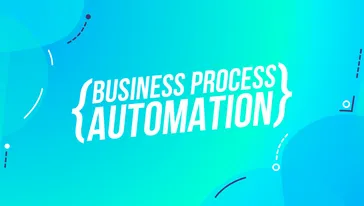Sending text messages via shared shortcodes is changing in the US and Canada, as regulations around A2P (application-to-person) messaging get tougher. When sending an SMS text message from your personal handset it seems to be a straightforward process. You type in your message, click the send button and your recipient receives your message within seconds. We call this P2P, or person-to-person, messaging. However, when sending bulk SMS or transactional SMS, via an SMS gateway, this is a whole different ball game ⚾
A2P messaging comes with sets of rules which vary hugely between different countries. And now, the way marketers and business owners send A2P messages is changing in the United States and Canada. As mobile carriers attempt to crack down on SMS privacy and spam concerns, this may change how you communicate with your customers.
Read on to learn how the new changes to shared shortcodes may affect you.
What is an SMS Shortcode?
When sending A2P text messages, businesses can opt to send their messages from a shortcode or a longcode.
Most people are familiar with SMS longcodes from their own personal messaging from their mobile handset. Anyone who uses a mobile phone will have their own dedicated long code number, ie. their personal mobile number.
In contrast, an SMS shortcode is a shortened number, usually 5 or 6 digits long, and it is for sending and receiving A2P text messages.

SMS shortcodes were created specifically for A2P messaging:
- Shortcodes can send and receive SMS at high volume.
- Being 5-6 digits long, shortcodes are far more memorable than long code numbers; this makes it easier for customers to opt in or engage with the number.
- It’s much easier to customise shortcodes or create vanity shortcodes of your business name/product.
You cannot buy a shortcode; major telecommunications carriers lease shortcodes to SMS gateways and businesses. Renting your own shortcode can require a significant time and cost investment; it generally takes 8-12 weeks to get one as carriers undertake rigorous vetting processes to protect consumers from SMS spam. Shortcodes also require an initial setup fee and ongoing monthly fees to be paid to the carriers, a cost that many small businesses find prohibitive.
Despite this, given the ability to handle high message volumes, shortcodes are great for large SMS broadcasts or marketing campaign blasts.
Dedicated vs Shared Shortcodes
Given the outlay required to lease a dedicated shortcode, some carriers began offering the use of shared shortcodes. A shared shortcode allows businesses to send high volume messaging without the cost of having their own designated shortcode. When multiple businesses send SMS from the same shortcode it’s called a shared shortcode. Carriers are able to differentiate each business on the shortcode through use of SMS keywords.
For example, if a fashion retailer, a taco shop and an online software provider all use the shortcode 123456:
- the fashion retailer might use a keyword like DRESS
eg. “Hi Maya, text DRESS to 123456 for 20% off our latest summer dress picks…” - the taco shop might choose TACO as their keyword (or even the taco emoji)
eg. “Hi Nadine, text TACO or ? to 123456 to place your order…” - the online software provider might have STOCK as their keyword
eg. “Hi Harry, text STOCK to 123456 to get free access to our stock image library – this week only!”
All these brands could be using this shortcode concurrently, without knowing who else is using the same shortcode.
Shared Codes: Shared Risk

The problem with sharing a shortcode, is that you also take on some of the risk should a bad actor send inappropriate messages from the same shortcode. This messages could be inappropriate for a number of reasons, but are most often because of spammy messages, prohibited message content or consent not granted by the recipient. In the case of such a violation, the carrier owning the shortcode may suspend use of that shortcode – affecting all businesses who use this shortcode. If your shortcode gets suspended, it can take time before the carrier is able to remove the suspension. This could lead to lengthy disruption to your text message campaigns and loss of engagement with your customers through SMS.
However, should you opt for a dedicated short code, you control 100% of the content being sent over that shortcode and thus your message deliverability.
New Changes For Shared Shortcodes
The past 2-3 years have seen huge advances in digital security and online privacy regulation. Consumers are increasingly conscious of who has their data, what’s happening to their data and who they have consented to receiving communications from. Regulation has had to evolve as technology gets more sophisticated, in order to protect consumers. And the telecommunications industry is evolving in line with this.
In October 2018, AT&T announced that they would cease the activation of new short codes and eventually wind down use of existing short codes. While the vast majority of A2P senders used the service correctly, mobile carriers noticed that the biggest senders of SMS spam were coming from shared shortcodes. When flagged as spammy, shortcodes get suspended at no notice to other businesses sharing the same. Upon discovering they’re unable to send messages through their shared shortcode, these legitimate businesses would flood carriers with enquiries about their ability to send messages. It all became one big headache ?
After the big announcement, many of the major players in the telco industry followed suit, winding down their existing shared shortcodes. Unfortunately this change is outside of the control of SMS providers; we are no longer able to offer shared shortcodes for our customers in the US and Canada.
Alternatives to Shared Shortcodes
This change means that businesses who previously used shared shortcodes now need to make some decisions around how they want to go forward. There are a few options that we have available to minimise disruption for our SMS clients.
Shared Longcode
When sending SMS through ClickSend, this is the default option for messaging. You can receive replies through setting up a rule on your account and receive your inbound SMS as an email.
Dedicated Toll-Free Number
Want to offer your customers a more interactive experience with your brand? Sign up for a dedicated toll-free number so your customers know that they can contact you with your own number. And it avoids confusion when your recipients receive messages from different businesses from the same sender number…

Toll-free numbers are long code numbers and support sending 1 message per second – which for high volume sending, like marketing blasts or transactional messaging for a large customer database, is not ideal.
Dedicated Shortcode
Dedicated shortcodes give you full control over your deliverability and are brilliant for sending large SMS blasts. We have no cap on the number of messages you can send each day from your dedicated shortcode, so if you’re a high volume sender you should consider sending from your own short code.
Life After Shared Shortcodes
We hope that this guide to changes to shared shortcodes in the US and Canada has been helpful. However, if you’re still unsure what to do or have further questions, please get in touch with your Account Manager or a friendly customer support team member through our 24/7 live chat. To open a chat, just click the face in the bottom right corner of your screen.



